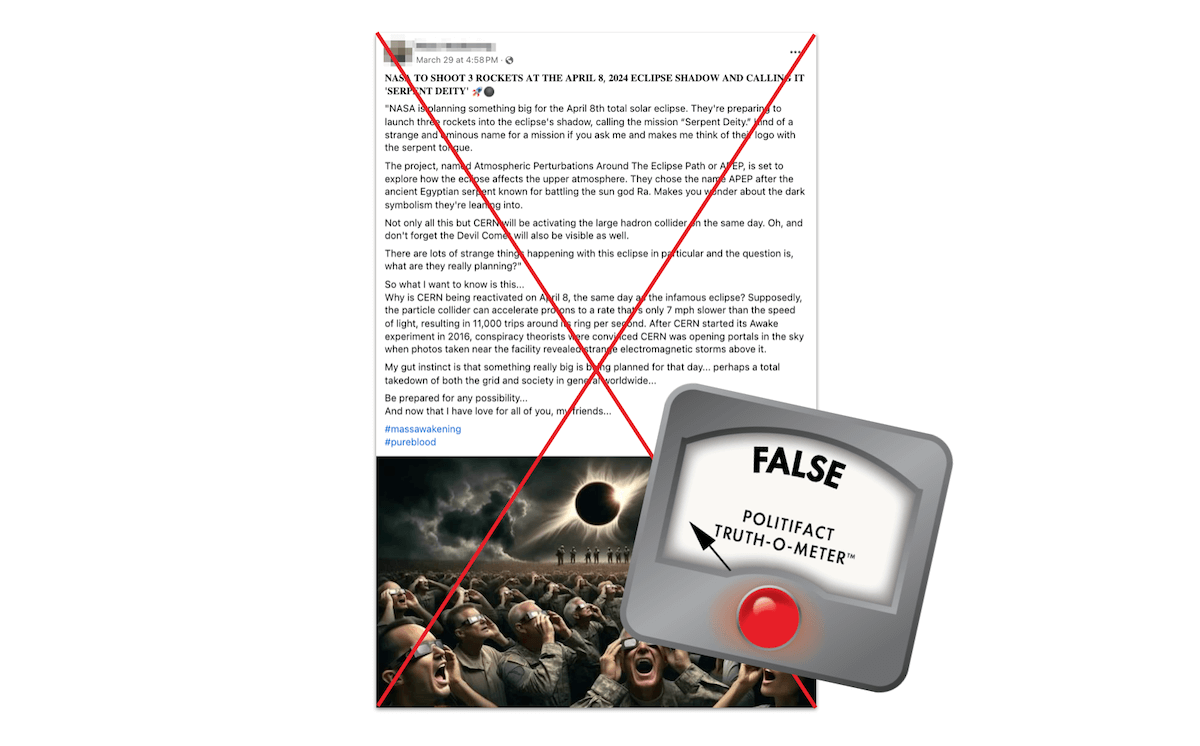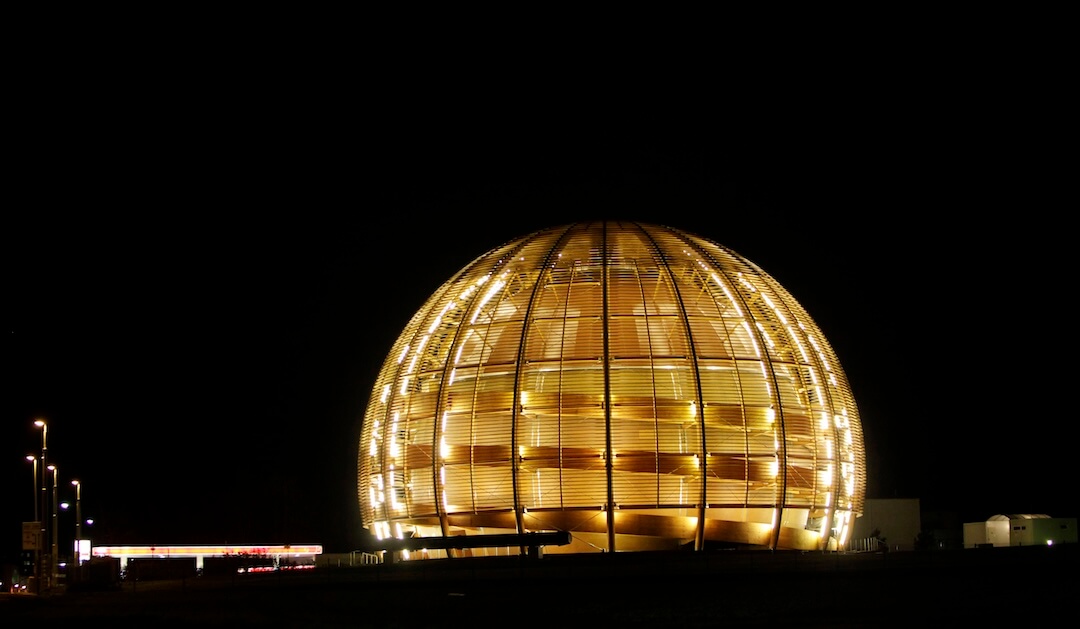As people around the country await the April 8 total eclipse, conspiracy theories about a Switzerland-based nuclear research facility have some social media users on edge. In their view is CERN, also known as the European Organization for Nuclear Research.
“Why is CERN being reactivated on April 8, the same day as the infamous eclipse?” asked a March 29 Facebook post, referencing what it called the group’s plan to activate “the large hadron collider” on the day of the eclipse. “My gut instinct is that something really big is being planned for that day… perhaps a total takedown of both the grid and society in general worldwide.” In another post April 1, a man in a baseball cap speculated that CERN is deliberately starting back up April 8 to “open up a gateway, a portal.”

(Screenshot/Facebook)
These posts were flagged as part of Meta’s efforts to combat false news and misinformation on its News Feed. (Read more about our partnership with Meta, which owns Facebook and Instagram.)
It is not unusual for scientists to conduct research during an eclipse, when the sun’s corona becomes visible and areas in totality go briefly dark in the moon’s shadow. Total solar eclipses allow researchers “to study Earth’s atmosphere under uncommon conditions.” NASA, for example, is launching three sounding rockets on the day of the eclipse to study its effects on the ionosphere (a mission that also became a subject of misinformation).
But CERN’s research is different. The primary research focus of CERN — an acronym derived from the French name “Conseil Européen pour la Recherche Nucléaire” — is particle physics, or “the study of the fundamental constituents of matter and the forces acting between them.” The organization seeks to find answers about the universe’s fundamental structure.
CERN houses the Large Hadron Collider, the most powerful particle accelerator in the world, which measures around 16.8 miles (27 kilometers) in circumference. The collider’s aim, as Britannica explains, is to “understand the fundamental structure of matter by re-creating the extreme conditions that occurred in the first few moments of the universe according to the big-bang model.”
CERN spokesperson Sophie Tesauri told PolitiFact in an email that the collider’s activities have nothing to do with the April 8 eclipse.
“What we do at CERN is doing particle physics with accelerators such as the LHC, and this has little to do with astrophysics in a direct way,” Tesauri said. “So there is no link between the solar eclipse on Monday 8th April, and what we do at CERN.”
CERN has an accelerator complex composed of machines with “increasingly higher energies.” A beam of particles is injected by one machine to the next one, bringing the beam to a higher energy — and the Large Hadron Collider is the last element in this complex.
“Hadrons” are a group of particles that include protons and ions. In the Large Hadron Collider, two beams travel in opposite directions at nearly light speed and are made to collide. In 2012, Large Hadron Collider experiments led to the discovery of the Higgs boson particle, a particle named for British physicist Peter Higgs, who in the 1960s postulated about the existence of a particle that interacted with other particles at the beginning of time to provide them with their mass.
Tesauri told PolitiFact that the accelerator complex is restarted every year after a brief winter technical stop, when beam production ceases so that the accelerators can undergo maintenance. Restarting an accelerator like the Large Hadron Collider “requires a full commissioning process in order to check that all equipment works properly.”
“Now that all the checks have been performed, the LHC is ready to provide particle collisions to the LHC experiments, and first collisions for this year should actually happen today 5th April,” Tesauri said in her email. “This will mark the beginning of the physics run for 2024.”
The beams were initially expected to enter collision April 8, according to a March 14 report. It said, “Depending on how work progresses, this milestone may shift forwards or backwards by a few days.”
On April 5, CERN announced that the Large Hadron Collider achieved its first stable beams in 2024, “marking the official start of the 2024 physics data-taking season.” The statement said that from March 8 to April 5, the Large Hadron Collider was set up to handle the beam and tested for any issues.
“Although the solar eclipse on 8 April will not affect the beams in the LHC, the gravitational pull of the moon, like the tides, changes the shape of the LHC because the machine is so big,” CERN’s announcement said. This phenomenon is not unique to an eclipse; a 2012 news release discussed distortions in the machine brought about by a full moon.
According to CERN’s frequently asked questions page, the Large Hadron Collider is expected to run over 20 years, “with several stops scheduled for upgrades and maintenance work.”
Conspiracy theories surrounding CERN’s work have been circulating for years. In a statement to Verify fact-checkers, CERN said that its research “captures the imagination of lots of people, which is why CERN has been featured in a lot of science fiction books / even movies, around the world.” CERN said works inspired by its research are fictional and “should not be confused with the actual scientific research.”
False claims about the group’s work are so common that the organization addresses some common theories on its FAQ page: No, it won’t “open a door to another dimension,” and no, it won’t “generate black holes in the cosmological sense.”
We rate the claim that CERN is activating its Large Hadron Collider in connection with the April 8 solar eclipse False.







